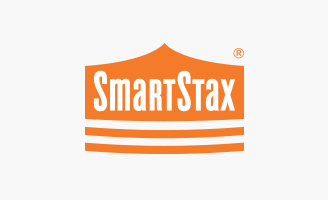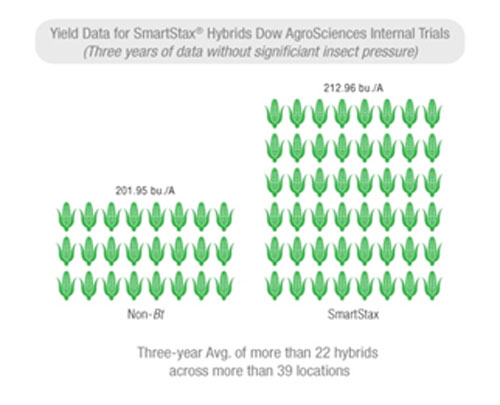
European corn borer (ECB) feeds on all above-ground parts of the corn plant. ECB can produce one, two or multiple generations in a single season. First-generation ECB cases whorl damage, while second-generation ECB tunnels through the stalk.

Black cutworm (BCW) is the most damaging cutworm species in corn. Larvae sever plants near the soil line, reducing stands and lowering yields. Damage from BCW is often most evident in no-till or weedy fields, especially in poorly drained areas. Storm systems carry adult BCWs moths to the Corn Belt from the southern United States in April and May each year where they lay their eggs in green fields.

Southwestern corn borer (SWCB) can produce two or more generations per year attacking corn at multiple growth stages. Later generations feed on developing silks and then tunnel into the stalk, leaving the plant more susceptible to lodging.

Corn earworm (CEW) larvae, most prominent in southern geographies, causes damage to corn by feeding on the tips of developing ears, but it is also known to feed on the whorl, silks and tassel. Damage to the ear not only decrease yield potential, but also creates an easy entry point for diseases.

Fall armyworm (FAW) overwinters in the Southern United States and migrates north in the summer. Early generations of FAW feed on young corn, from emergence to waist high or approximately V8, and can destroy entire plants. Controlling FAW with traditional pesticides is difficult and often not economical.

Corn rootworm (CRW) causes $1 billion in lost revenue each year —$800 million in yield loss and $200 million in treatment costs — according to the U.S. Department of Agriculture, making it the costliest corn insect pest. SmartStax uses multiple modes of action to effectively control corn rootworm and prevent insect resistance.
 SmartStax® uses multiple modes of action to protect corn from the broadest spectrum of above- and below-ground corn insects. It offers reduced refuge requirements of only 5 percent in the Corn Belt.1 By allowing growers to plant 95 percent of their acres to high-yielding, insect-traited hybrids, SmartStax helps farmers maximize whole-farm yield potential.
SmartStax® uses multiple modes of action to protect corn from the broadest spectrum of above- and below-ground corn insects. It offers reduced refuge requirements of only 5 percent in the Corn Belt.1 By allowing growers to plant 95 percent of their acres to high-yielding, insect-traited hybrids, SmartStax helps farmers maximize whole-farm yield potential.










